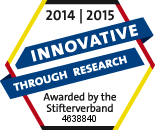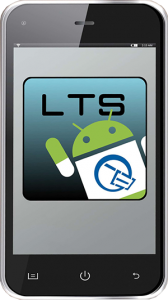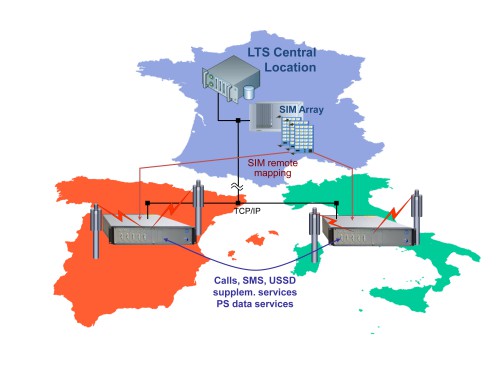
Space saving individual shielding: Up to 8 RF Guards fit on a rack shelf.
First, it seemed like a crazy idea that Qosmotec should have its own shielding box in the portfolio. There are so many ways to protect mobile phones from external RF disturbances: Variants with plenty of mechanical opening mechanisms, with meshes on top or on the side for visual inspection and manual intervention, in ergonomic designs, in sizes from a small freezing compartment to a whole fridge … Why should Qosmotec design one of its own?
RF shielding fitting the demands of test automation
The reason is simple: None of the tools mentioned are appropriate for test automation purposes. None of the existing solutions fulfilled the following requirements:
- Space-saving, so that a high number of UEs can be kept shielded individually for example in a rack
- Software accessible, so that all interfaces can be interrupted or restarted automatically to ensure stability of an automatic test run
- Cost-effective, so that individual shielding of each UE stays affordable.
Our first shielding box was manufactured in 2011 and was with 16 cm length and 11 cm width primarily made for datasticks.
Two SMA connectors lead into the box, so that it can also be used for MIMO tests. “Our vital contribution to RF shielding in combination with test automation is our software controllable USB circuit”, explains Qosmotec’s technical director Axel Voigt the uniqueness of this box. “We have written a little software application that can interrupt each USB port individually. This is necessary, if during an automatic test run a situation occurs, where a UE needs to be removed from the USB port and plugged in again – a situation that can never be excluded when working with commercial UEs, especially, if they are brand-new or even still under test for market introduction”. This software is available as a GUI for Windows as well as an API for Windows and Linux, so that it can be very flexibly used in any environment. Of course, it is an integral part of our
Mobile Network Tester LTS.
From a simple accessory to a stand-alone product
While the shielding boxes were originally planned to be used only in LTS, the concept recieved surprisingly great feedback, so that Qosmotec decided to offer them also independently from our system under the name “RF Guard”. Very soon, new box sizes were needed. While an IPhone or a Samsung Galaxy S2 still fitted into a box, the later upcoming 5 inch smartphones could hardly been squeezed into one. So we slightly extended the length to 20 cm and provided a 90° angled USB cable to save space on the connection. As an optional extension, we provided interfaces to feed the phone with 12 V power to charge the battery in parallel to testing and to operate the mobile’s power button.

The new version for larger UEs: Desgined for tablets, routers and UE prototypes that do not have their final form factor. It also supports control via Ethernet.
Boxes for UEs of all shapes and sizes
Meanwhile, even a bigger box is available. With ground dimensions of 30 x 30 cm and a height of 17,5 cm, still two of them can be mounted on a rack shelf consuming 4 U in the rack. These boxes are also equipped with an Ethernet Interface, absorbing foam inside, and have 4 RF connectors, so that 4×4 MIMO can be tested inside. “Actually, this size breaks our original concept of a tiny box. But this adaptation was not that complicated to realize in the end and now fulfils also the demands of our users, who want to test with tablets, routers or prototype developments that have not reached their final form factor”, says Axel Voigt.
Ongoing developments: Battery charging and USB 3.0
New developments on the shielding boxes are already ongoing. For example, a lot of testers have struggled with smartphones not charging fast enough, when using a USB cable for data connection. Therefore, tests might interrupt after a certain time, because the battery is empty. The reason for this is, that a USB connection to a computer charges with only 0.5 Ampere, but might consume more, especially when it reaches high data rates. Original vendor chargers can provide a higher charging power, but normally it is not possible to use both in parallel. Qosmotec has now overcome this problem and develops a circuit for the shielding boxes that enables to use the data connection to a computer as well as original vendor chargers in parallel.
The demand for a USB 3.0 interface is rising. “Normally, high data rates through the interface in the box and effective shielding are excluding each other”, explains Axel Voigt the problem on these technologies. Nevertheless, Qosmotec is working on this technology to provide a satisfying solution also for this. This makes obvious in the end, that it was not such a bad idea to work on our own shielding boxes.










 But there is no simulation of a SIM card, nor is there any modification of the information on the SIM cards. A picture that we really like is the representation of a SIM card in form of a butterfly, symbolizing that the SIM is flying from one location to another. The only prerequisite is a stable internet connection between central unit and remote probe.
But there is no simulation of a SIM card, nor is there any modification of the information on the SIM cards. A picture that we really like is the representation of a SIM card in form of a butterfly, symbolizing that the SIM is flying from one location to another. The only prerequisite is a stable internet connection between central unit and remote probe.










